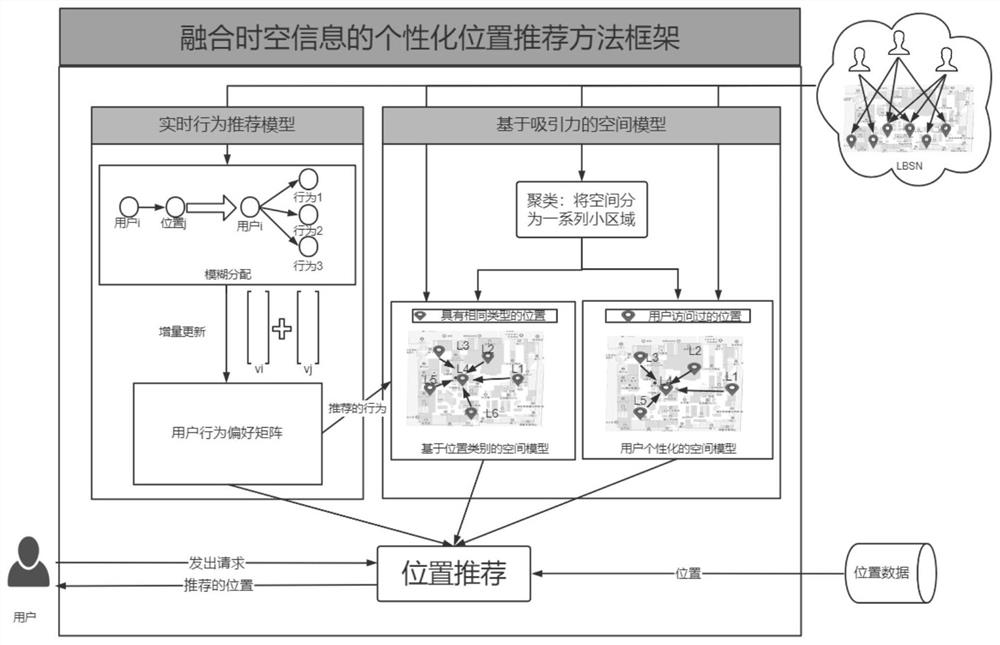User behavior recommendation model establishment method and position recommendation method based on spatio-temporal information
A technology for model building and behavior, applied in fuzzy logic-based systems, genetic models, digital data information retrieval, etc.
- Summary
- Abstract
- Description
- Claims
- Application Information
AI Technical Summary
Problems solved by technology
Method used
Image
Examples
Embodiment 1
[0049] This embodiment discloses a method for establishing a user behavior recommendation model, including the following steps:
[0050] Step 1: Obtain the user sign-in data set, delete the sign-in data belonging to the cold start in the user sign-in data set, and obtain the sign-in data set, and each piece of sign-in data in the sign-in data set includes user, location, location type and check-in time;
[0051] Step 2: Use the genetic algorithm to calculate the influence degree of the position type of each check-in data in the check-in data set obtained in step 1 on the check-in time in the check-in data, and obtain the time influence degree of each position type;
[0052] Step 3: According to the time influence degree of each location type obtained in step 2, use the fuzzy assignment method to map each piece of check-in data to multiple time periods to obtain multiple behaviors, and obtain a behavior data set. Each behavior in the behavior data set There is a corresponding u...
Embodiment 2
[0106] This embodiment provides a personalized location recommendation method that integrates spatio-temporal information. The overall framework is as follows figure 1 , is mainly divided into three modules: a real-time behavioral recommendation model, a spatial model based on attractiveness, and a personalized location recommendation model that integrates spatiotemporal information. The concrete implementation steps of this method are as follows:
[0107] The first part of the real-time behavior recommendation model:
[0108] This method mainly considers the correlation of the user's historical access behavior at the time level. Firstly, the learning model based on the genetic algorithm is used to determine the degree of influence of different location types on the time level; Multiple user behaviors, and build a behavioral data set that incorporates temporal correlation; in addition, use an incremental random walk algorithm to update the preference relationship between user...
PUM
 Login to View More
Login to View More Abstract
Description
Claims
Application Information
 Login to View More
Login to View More - R&D
- Intellectual Property
- Life Sciences
- Materials
- Tech Scout
- Unparalleled Data Quality
- Higher Quality Content
- 60% Fewer Hallucinations
Browse by: Latest US Patents, China's latest patents, Technical Efficacy Thesaurus, Application Domain, Technology Topic, Popular Technical Reports.
© 2025 PatSnap. All rights reserved.Legal|Privacy policy|Modern Slavery Act Transparency Statement|Sitemap|About US| Contact US: help@patsnap.com



